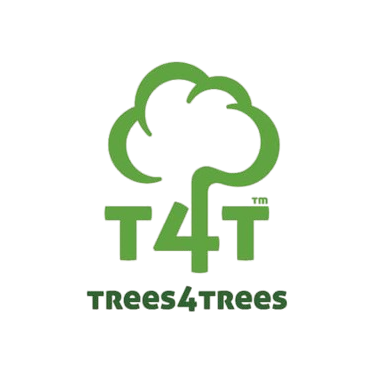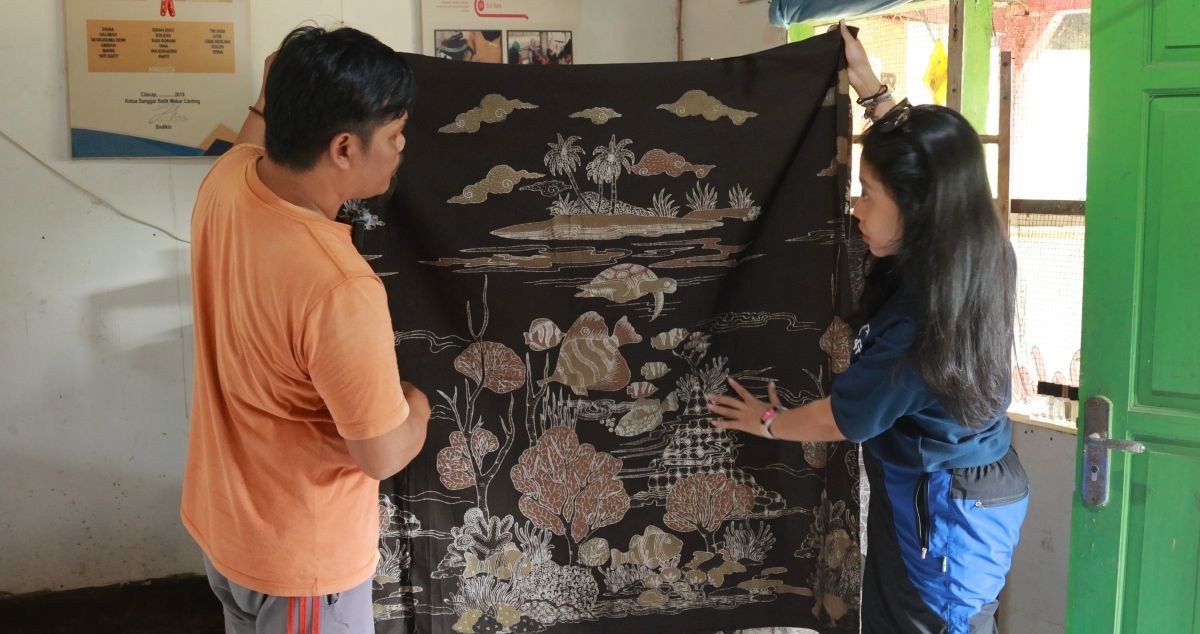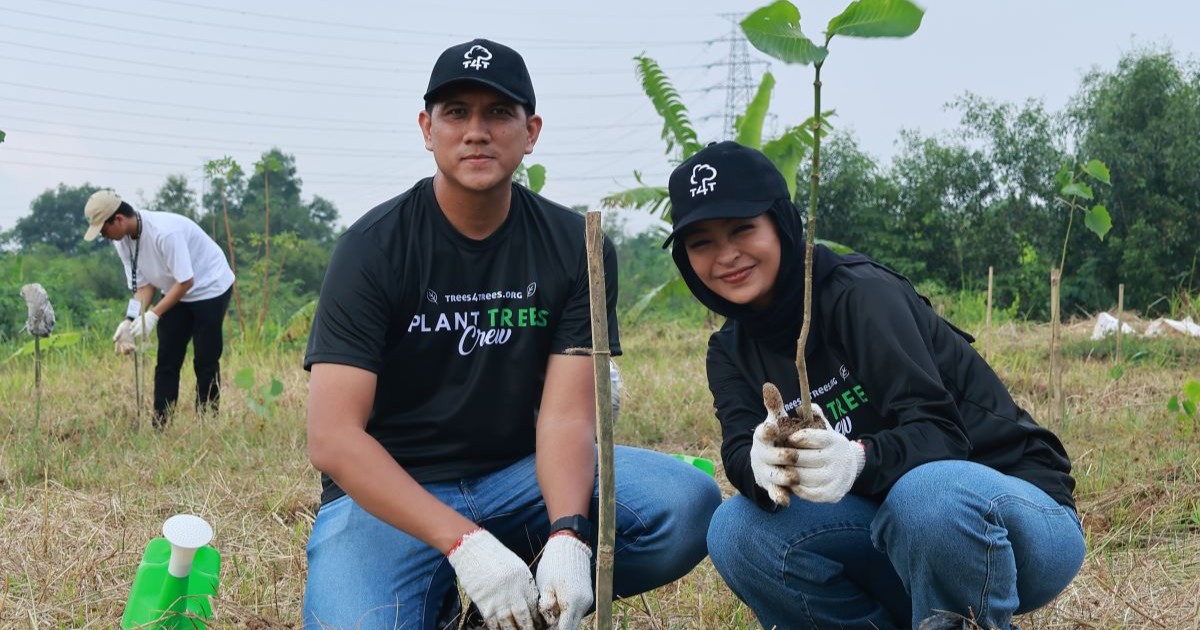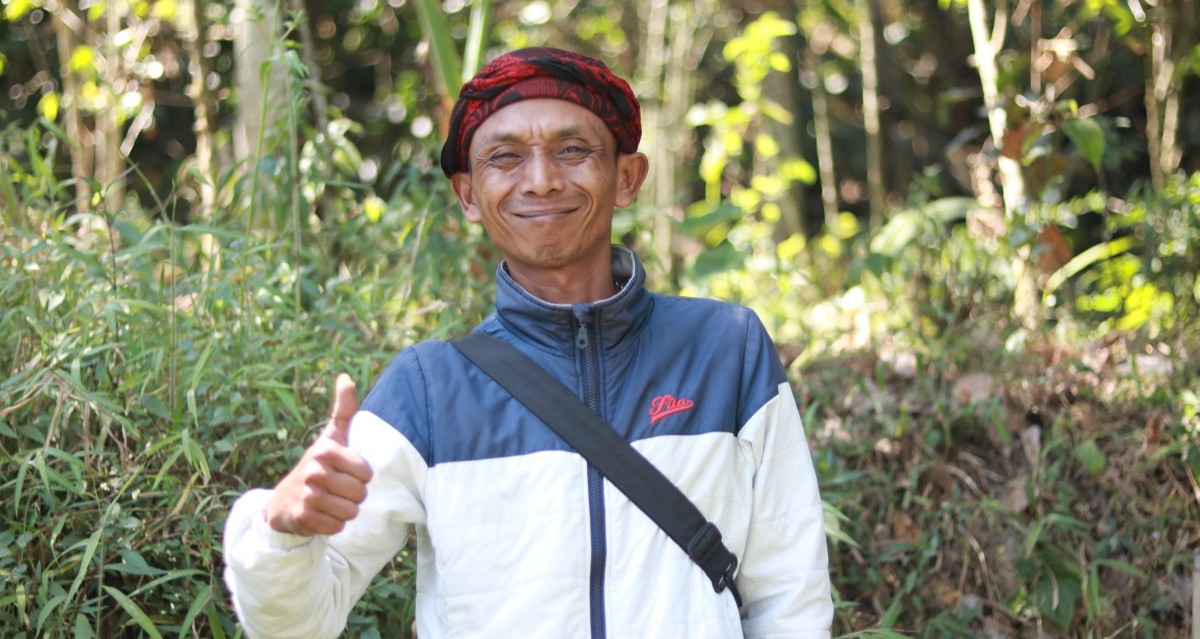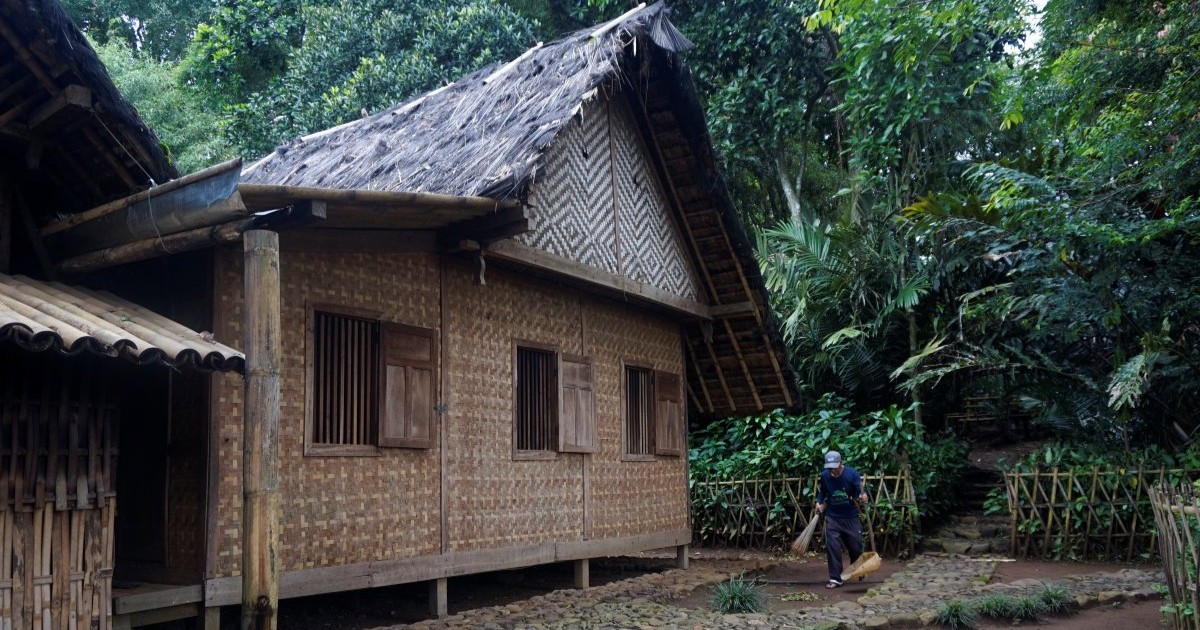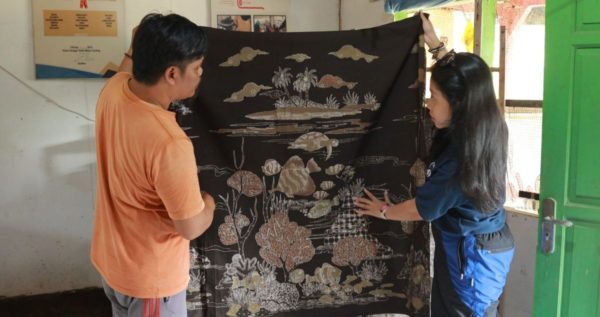
Surrounded by over 8,000 hectares of coastal trees and wetlands, Kampung Laut Village is home to the largest mangrove ecosystem in Central Java. This verdant water world in Cilacap Regency supports a rich variety of biodiversity, including over 50 distinct mangrove species.
For the communities of Kampung Laut (a name which means ‘ocean village’ in the Indonesian language), mangroves are essential. Most of the people here work as fishers and recognize the importance of these trees to ecosystem health and productivity.
But the mangroves’ value goes further still, with roots reaching deep into local culture; the trees provide natural dyes which can be used in the traditional art of batik textiles, thereby transforming nature’s bounty into both cultural heirlooms and economic opportunities.
In this article, we explore a nascent artisan industry that has emerged in Kampung Laut, inspired by nature and intrinsically connected to land and culture.
The Birth of Kampung Laut Batik
The story of Kampung Laut batik began in 2015 when Sodiqin, leader of the Mekar Canting Batik Group, was inspired by a batik-making program on national television. Together with two neighbors, he began to experiment with techniques and materials until they found the right formula.
“At first, we used natural dyes from ketapang leaves and jengkol tree bark,” Sodiqin recalls. “But I wanted something unique that represents Kampung Laut. I noticed the fallen Rhizopora mangrove fruits scattered on the roads. We were curious to see if they could be used as natural dyes, as many people had claimed.”
Sodiqin and his friends started collecting Rhizopora fruits, cutting and crushing them, then drying them under the sun for three days before boiling them. “The entire process of producing the natural dye takes about a week,” he says, “and dyeing the cloth needs another three days to a week; it takes a while, but the results are worth the wait.”
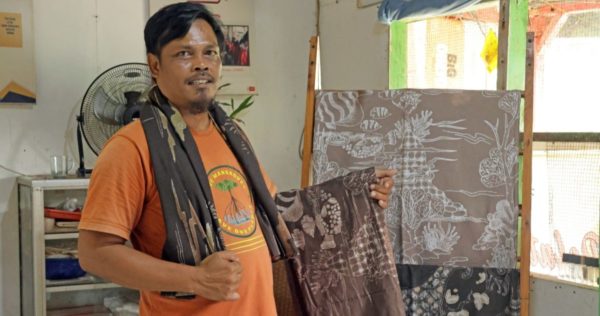
Motifs and Materials Inspired by Nature
In addition to the distinctive brown hues of Rhizophora mangroves, blended with colors from other local trees, batik designs from Kampung Laut are brought to life through patterns and motifs inspired by the sea and the richness of coastal life.
As Sodiqin explains, “when we asked ourselves what best reflects Kampung Laut, the answer was simple: mangroves and fisheries.” Designs from the Mekar Canting Batik Group feature fish, crabs, shells, shrimp, mangrove fruits, and underwater scenes.
Most of their batik fabrics are made using a traditional stamping technique, whereby hot wax is applied to cloth using engraved copper stamps before it is dyed. This method allows the artisans to produce batik more efficiently and replicate patterns more consistently.
“We also use the hand-drawn technique, but only by special order,” Sodiqin said. “Hand-drawn pieces take longer and require more skill.” This technique involves drawing patterns using a traditional drawing tool called a canting, which is filled with hot wax. It can take months just to complete one piece of batik cloth using this method.
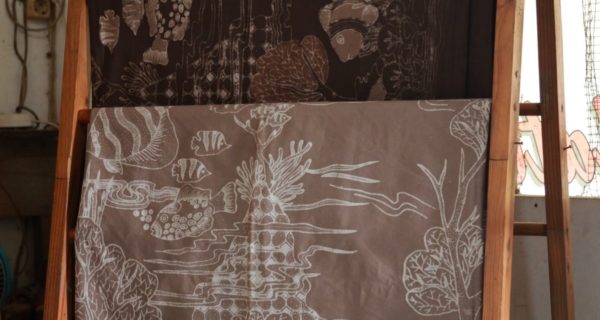
Sustainable Livelihoods, Interwoven with Women’s Empowerment
What began as the passion project of three individuals has grown into a 20-strong collective, made up mostly of women. Training programs provided by the government and corporate CSR initiatives have strengthened their skills and encouraged more women to join. “It started with women inviting others to learn batik,” says Sodiqin. “Then, through word of mouth, more women have become involved.”
The rise in popularity of Kampung Laut batik has opened new income opportunities for women in coastal communities. Batik-making provides much-needed earnings, especially during exhibitions or when orders come in. “The income can help women to cover their children’s needs or support other family expenses,” Sodiqin says.
Nevertheless, marketing remains a challenge. Located in a remote area, accessible only by crossing a lagoon, Kampung Laut has limited access to markets. Most sales come from exhibitions in cities like Jakarta, Yogyakarta, and Semarang. “We tried e-commerce, but delivery is very difficult from here,” he said.
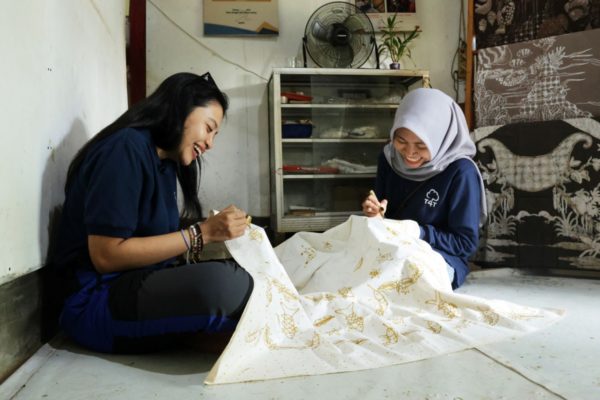
From Ecology to Economy: Healthy Nature Helps Communities to Thrive
In 2022, Trees4Trees began replanting mangroves in Kampung Laut to restore areas degraded by deforestation. From 2022 to 2023, over 24,000 individual trees were successfully planted. In 2024-2025, with support from our partner, EcoMatcher, 125,000 trees were planted. In October 2025, together with EcoMatcher and GRAB, we are planting an additional 50,000 mangroves in the area.
“By expanding mangrove cover, our mangrove planting program helps local communities thrive, sustain their livelihoods, and keep their culture alive, including the mangrove batik,” explains Yoga Septian, Trees4Trees Unit Manager of the Cilacap site. “The local community relies on fisheries and mangroves for their living; beyond fishing, they process mangrove fruits into snacks and produce mangrove batik as additional sources of income,” he added.
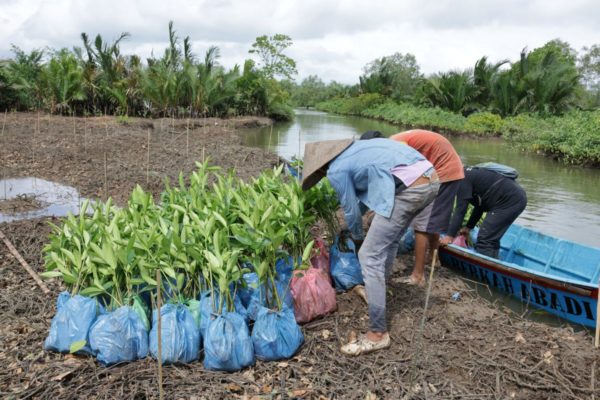
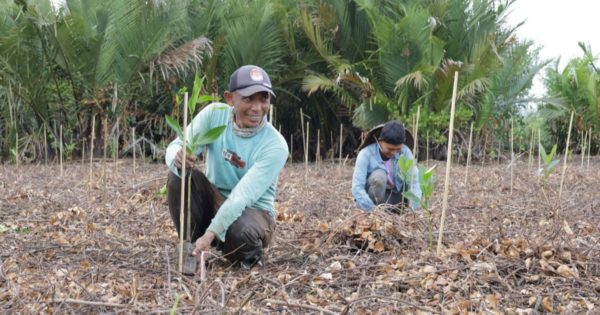
Healthy mangroves provide numerous benefits to people, nature, and the planet. They produce oxygen, absorb CO2, prevent coastal erosion, and provide essential nurseries for fish. For local people like Sodiqin and his group, these trees also provide materials, livelihoods, and cultural value.
With that in mind, Sodiqin insists that sustainability is key. “Every time we harvest resources provided by the mangroves, we must also replenish them,” he says, “so they won’t vanish like they did before. The more we plant, the better our lives will be.”
Writer: V. Arnila Wulandani. Editor: Chris Alexander. Photos: Yulianisa Dessenita for Trees4Trees
